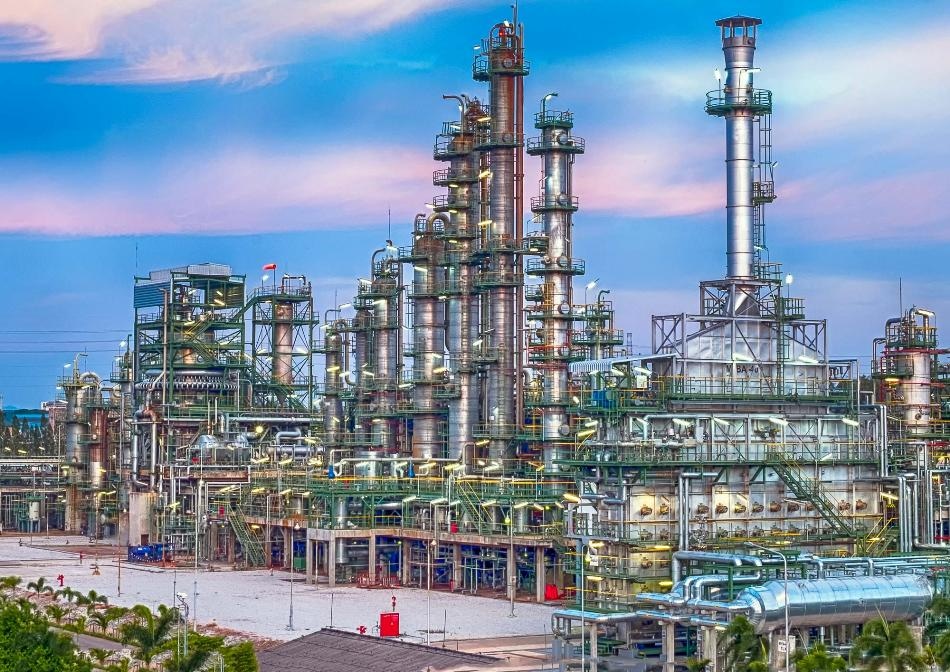Sep 24 2019
Ethylene is a part of numerous products people use daily, ranging from soda bottles to polyester clothing. Aiming to match the demand, the Shell Oil Company is constructing an ethane cracker plant in Beaver County, Pennsylvania, exclusively to synthesize ethylene molecules from the copious amounts of ethane present in natural gas.
 An ethane cracker plant. (Image credit: Swanson School of Engineering, University of Pittsburgh)
An ethane cracker plant. (Image credit: Swanson School of Engineering, University of Pittsburgh)
But the chemical reaction employed to change ethane into useful ethylene is deficient. Hence, such plants yield an impure blend of ethane and ethylene. Isolating pure ethylene from ethane is a tough and expensive process. However, new research at the University of Pittsburgh’s Swanson School of Engineering is all set to simplify this process.
The method analyzed in two new papers, published in the Journal of the American Chemical Association and Organometallics, would eliminate the need for liquefaction and distillation by engineering a material that only binds ethylene molecules, consequently isolating them from ethane.
Ethylene is an olefin, which is a molecule with an unsaturated bond (similar to unsaturated fats). Existing approaches of isolating ethylene from ethane require cooling the mixture to very low temperatures, liquefying it, and supplying it into a large distillation column. This process is energy-intensive and expensive.
The new process was formulated by a research team headed by Professors Karl Johnson, PhD, and Götz Veser, PhD, from Chemical and Petroleum Engineering, and Professor Nathaniel Rosi, PhD, from the Department of Chemistry. It would possibly save a considerable amount of energy, decreasing carbon emissions and costs simultaneously.
The core of this new separation technique is isolated copper atoms to which olefins such as ethylene can adhere to securely. Copper atoms naturally tend to cluster together, which puts an end to their ability to bond with olefins. Therefore, the Pittsburgh scientists used metal-organic frameworks (MOFs) to successfully isolate single atoms of copper in the correct location, to create high-grade ethylene that is at least 99.999% pure.
The uniqueness of this material is that the isolated copper atoms are in the right oxidation state and the right geometry within the metal organic framework to provide very high selectivity—higher than other adsorption methods—and it can easily be scaled up. MOFs are a practical alternative to an inefficient and costly process.
Karl Johnson, PhD, W.K. Whiteford Professor, Department of Chemical and Petroleum Engineering, Swanson School of Engineering, University of Pittsburgh
Johnson is also the Associate Director of the Center for Research Computing.